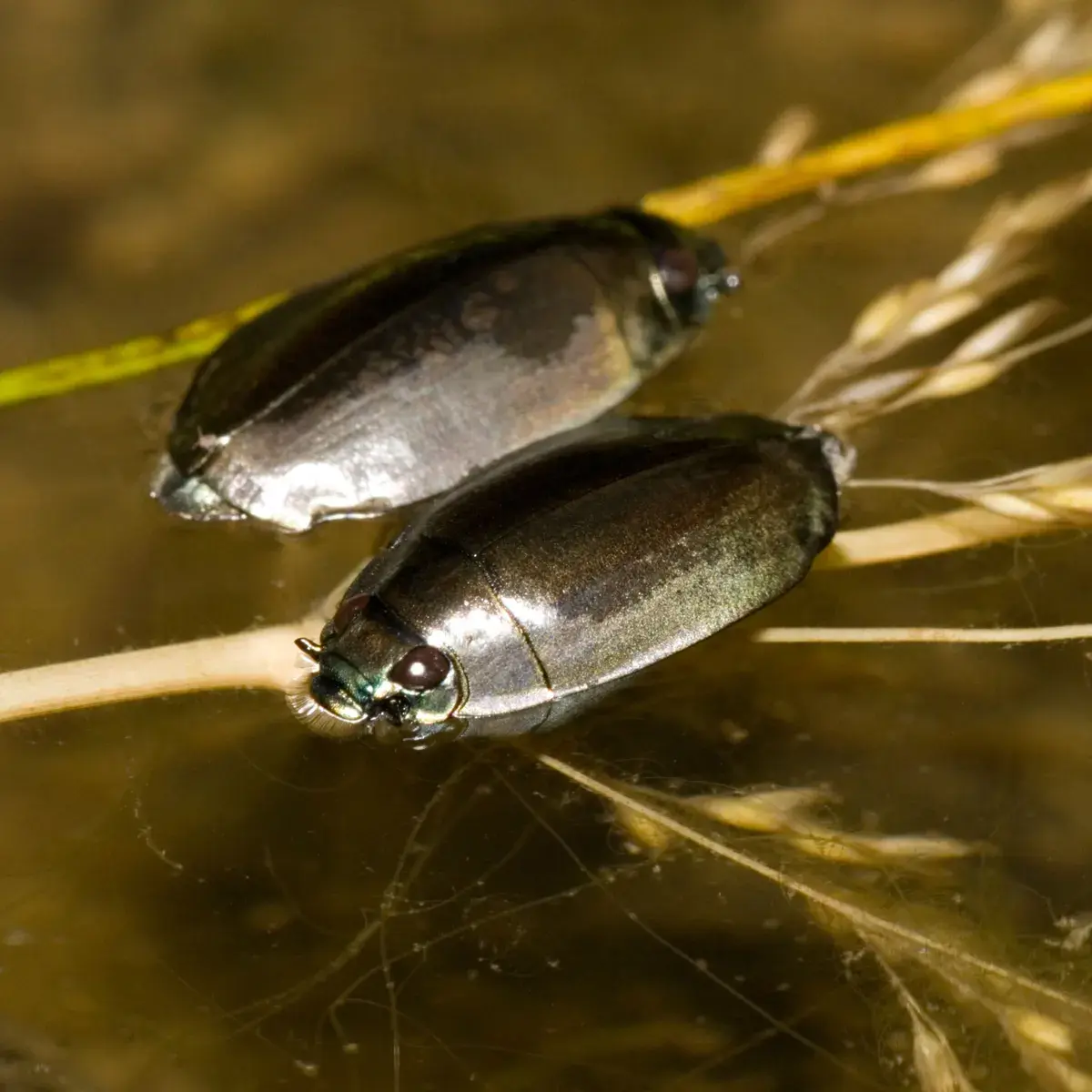The whirligig beetles are water beetles, comprising the family Gyrinidae that usually swim on the surface of the water if undisturbed, though they swim underwater when threatened. Whirligigs can be distinguished from all other beetles by their short, clubbed antennae and their two pairs of compound eyes — one pair above the water, and one pair below — which helps them to quickly and accurately capture their prey while also evading predators. Whirligig beetles occur in many types of aquatic habitats, including ponds, lakes and streams. They can swim almost as effortlessly underwater as they do on the surface, making them difficult to catch. Their wings are well developed, so whirligigs can fly to a new home if their pond or stream should dry up. These beetles and their larvae are carnivorous. The larvae eat other aquatic insects and invertebrates. The adults often feed on land insects that fall into the water. These beetles are generally preyed upon by any predator bigger than itself. Concerning reproduction Females lay eggs on emergent vegetation or debris just below the water surface. After hatching in 1–2 weeks, larvae pass through three instars. Larvae are found on submerged objects where they feed on small aquatic insects. Pupal chambers are constructed in mud just above the water level. Here is a video so you can see the whirligig’s whirling.

Okayy... hi.